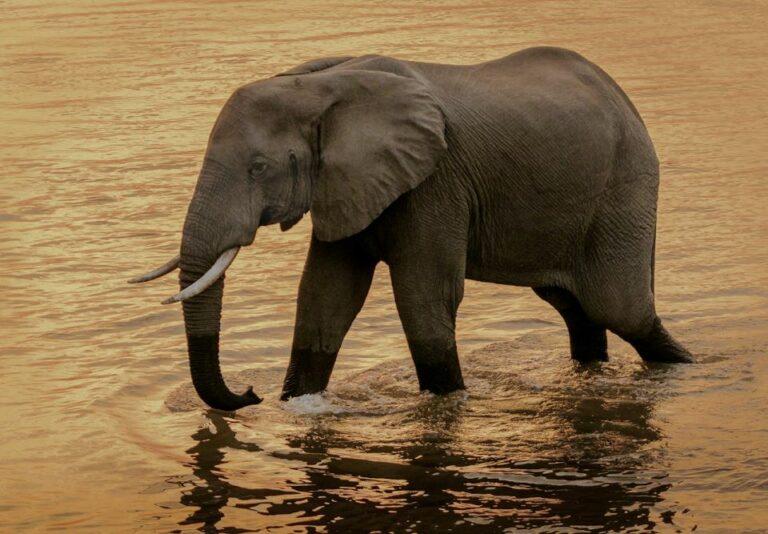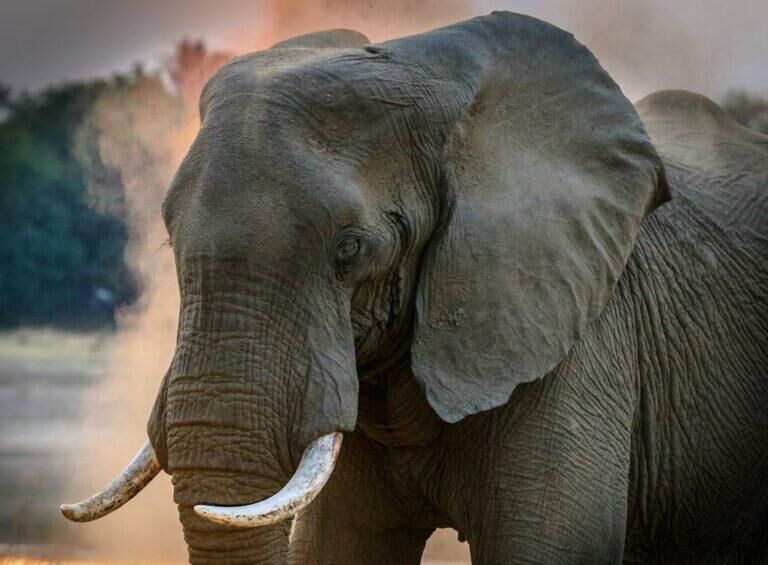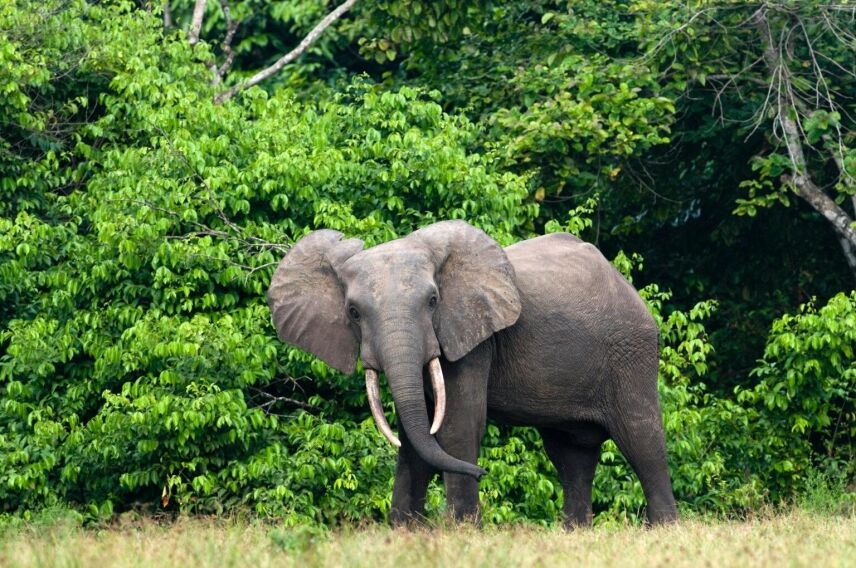Hunting elephants has long been a subject of curiosity and debate, deeply rooted in tradition and human history. For some, it’s about the challenge of tracking one of the world’s largest and most intelligent animals, requiring patience, skill, and respect for the environment. For others, it’s tied to conservation efforts and the management of wildlife populations in Africa’s vast ecosystems.
As we explore why people hunt elephants, it’s essential to understand the broader context. African hunting safaris offer a unique connection to the wild, where every moment is unpredictable. From the cultural significance to the role of sustainable hunting in supporting local communities and habitats, there’s more to this practice than meets the eye. Understanding these motivations helps us see the balance between tradition, conservation, and the pursuit of unforgettable experiences in Africa’s untamed landscapes.
[DYNAMIC-BLOGTABLEOFCONTENT]
Key Takeaways
- Elephant hunting is deeply tied to cultural traditions, historical practices, and the symbolism of ivory as a status symbol.
- Economic drivers, including black market ivory demand and the use of elephant parts in traditional goods, contribute to the persistence of hunting.
- Human-elephant conflicts, such as crop damage and overpopulation in certain regions, lead some communities to resort to hunting for protection and resource management.
- Conservation efforts, including anti-poaching initiatives and habitat restoration, seek to address population decline and mitigate illegal hunting.
- Ethical and environmental concerns highlight the negative impact of hunting on elephant populations, herd structures, and ecosystems, stressing the need for sustainable approaches.
Historical Reasons For Hunting Elephants
Elephant hunting has deep roots, driven by cultural practices and economic goals. These motivations shaped interactions with elephants over centuries, creating historical frameworks that persist today.
Cultural Practices And Traditions
Traditional elephant hunting played a vital role in ceremonies and rites. Many African communities hunted elephants as part of significant rituals, such as initiation rites or celebrations, marking adulthood or societal milestones. The animal’s size and strength symbolized courage, making the hunt a test of bravery. Some cultures used elephant parts for sacred items like drums, shields, or ornaments, signifying power and heritage.
Additionally, hunting facilitated storytelling and folklore. Passed down generations, tales of elephant hunts built a shared cultural identity. Groups often incorporated these accounts into performances, dances, or oral chronicles, reinforcing their importance in collective memory.
Symbolism And Status Associated With Ivory
Ivory served as both a valuable resource and a marker of wealth. Historically, its demand spanned continents due to its beauty, durability, and symbolic significance. Kings, chiefs, and traders sought ivory not only for its function in crafting items like jewelry or sculptures but also to demonstrate status and authority. The large tusks of African elephants became a sought-after commodity in global trade, creating a legacy intertwined with power and economic success.
Across centuries, ivory became synonymous with prestige. Nobility in Europe, Asia, and Africa treasured it, making it a central feature in diplomatic gifts, royal collections, or religious artifacts. The hunt for these prized tusks, therefore, carried not only economic profit but also social ascent.

Economic Motivations
Elephant hunting has substantial economic-driven factors that influence its practice. These motivations often connect directly to global trade, cultural demands, and localized community benefits.
Ivory Trade And Black Market Demand
The ivory trade plays a pivotal role in fueling elephant hunting. Demand for ivory stems from its use in luxury items, decorative carvings, and religious artifacts. Despite international bans on ivory trading, illegal markets persist, contributing to high-value transactions. A report from TRAFFIC indicated that black market ivory prices range between $1,500-$2,500 per kilogram, offering substantial economic incentives. Hunters target elephants primarily for their tusks, reinforcing the market’s supply-demand cycle.
Elephant hunting listings sometimes attract international buyers indirectly interested in ivory, further complicating regulatory enforcement. These illegal activities often intertwine with organized crime networks, making control efforts challenging. The lucrative nature of this trade continues to drive both local and foreign interest in hunting elephants for profit.
Use Of Elephant Parts In Traditional Goods
Beyond ivory, various elephant parts serve as essential materials for traditional goods. Elephant hide is processed for crafting durable leather products, while bones are carved into tools or ornaments in some cultures. Elephant hair is woven into bracelets and adornments commonly sold as symbols of strength or protection.
Local economies often rely on the sale and export of these items, establishing markets within and beyond Africa. Communities involved in elephant hunting packages frequently market these goods, contributing to regional economic growth. Enhanced awareness and tourism occasionally boost demand for such handcrafted items, creating a steady income source for artisans and hunters alike.

Human-Elephant Conflict
Human-elephant conflict arises as human populations expand into elephant habitats, leading to disputes over land and resources. This conflict drives some individuals to hunt elephants, aiming to protect livelihoods and communities.
Protecting Crops And Property
Elephants often raid farmland in search of food, causing substantial crop damage and economic loss to farmers. Corn, sugarcane, and rice plantations are frequent targets. When elephant encounters turn destructive, farmers may resort to hunting elephants to prevent recurring losses. Livelihood stability is crucial for communities in rural areas, where agriculture sustains families and local economies.
Structures like water tanks, fences, or grain storage are also vulnerable to elephant attacks. In severe cases, defending property might become a reason individuals consider elephant hunting. Innovative deterrents like chili fences and beehive barriers are proving effective alternatives, though they require resources and consistent implementation.
Managing Overpopulation In Certain Areas
In regions with dense elephant populations, resource strain increases the likelihood of human-elephant conflicts. Overpopulated zones can lead elephants to wander into human settlements, intensifying disputes. To manage these situations, some conservation policies still allow controlled hunting under strict regulations. These efforts aim to balance ecosystem health while reducing conflict.
For example, wildlife reserves in some African nations issue permits for regulated elephant hunting as part of comprehensive conservation strategies. These hunting packages are often paired with conservation contributions, helping fund habitat protection initiatives. Managing overpopulation responsibly ensures both human safety and sustainable wildlife preservation.
Conservation Efforts And Their Challenges
Conservation strategies play a vital role in protecting elephant populations and addressing threats like poaching and habitat loss. Effective programs require comprehensive approaches to overcome obstacles that hinder sustainable solutions.
Anti-Poaching Measures
Anti-poaching measures target the illegal killing of elephants, a leading cause of population decline. Governments and organizations employ wildlife rangers to patrol reserves and implement surveillance technologies, such as drones and GPS tracking, to monitor elephant movements and detect poachers. For example, in Kenya, rangers equipped with advanced tools have reduced poaching incidents by a significant margin in wildlife conservancies.
Stronger law enforcement also deters poachers. Countries enforce heavy penalties for illegal elephant hunting and impose sentences ranging from 5–15 years for poaching-related offenses. Community engagement programs involve local populations in protecting wildlife, where residents receive benefits from conservation efforts, such as employment opportunities within reserves or revenue from eco-tourism.
Addressing Habitat Loss And Economic Disparities
Addressing habitat loss involves creating and maintaining protected areas that support elephant populations. Expanding reserves and wildlife corridors ensures elephants have space to roam, reducing human-elephant conflicts. In Botswana, for instance, transboundary corridors connect fragmented habitats, allowing for safer elephant migration and minimizing contact with human settlements.
Economic disparities often drive illegal hunting and habitat degradation. Development programs that support sustainable livelihoods, such as eco-friendly agriculture or tourism promotion, help communities rely less on destructive activities. Elephant hunting packages focused on regulated and ethical practices, permitted under conservation frameworks, can provide funding for habitat restoration and wildlife research while benefiting local economies. Balancing development and conservation ensures both human and elephant needs are met.
Ethical And Environmental Implications
Elephant hunting, though culturally and economically significant in certain regions, poses ethical dilemmas and environmental risks. Let’s explore how this practice affects elephant populations and ecosystems.
The Impact On Elephant Populations
Elephant hunting directly reduces population numbers, which is particularly concerning for species like the African savanna elephant and forest elephant, both of which are classified as endangered by the IUCN. Overhunting disrupts herd structures, as elephants are highly social and depend on strong familial bonds. Killing mature tuskers results in the loss of genetic diversity and leadership crucial for herd survival. This destabilization may lead to increased vulnerability to predators and environmental pressures.
The demand created by illegal activities, such as ivory smuggling, further exacerbates the issue. Despite international restrictions, black market ivory trading persists, creating additional pressure on already declining populations. Awareness campaigns, local conservation efforts, and stricter law enforcement remain critical to counteract these impacts.
Long-Term Consequences For Ecosystems
Elephants play a key ecological role as keystone species. They shape their habitats by knocking down trees, digging water holes, and dispersing seeds. A decline in elephant populations disrupts these ecological services, leading to imbalances that affect other species, from birds and insects to larger mammals. For instance, fewer seed-dispersing events hinder forest regeneration and reduce biodiversity.
Additionally, when elephant numbers drop, it impacts tourism revenue in African reserves, undermining conservation funding and local economies. Ethical hunting models and conservation-driven elephant hunting packages must focus on sustainability, ensuring any activity supports ecosystem health and wildlife protection.
By understanding the ethical and environmental implications of elephant hunting, we reinforce the need to balance economic interests with the preservation of these extraordinary creatures and their habitats.
Conclusion
Elephant hunting is a deeply complex issue shaped by cultural traditions, economic pressures, human-wildlife conflicts, and conservation challenges. While it has historical roots and modern implications, the ethical and environmental consequences cannot be ignored.
As we strive to protect these majestic creatures, it’s essential to adopt sustainable practices that prioritize their survival and ecological importance. Balancing conservation efforts with the needs of local communities and addressing illegal activities like poaching are critical steps toward ensuring a future where elephants thrive in harmony with humans.
Frequently Asked Questions
Why is elephant hunting historically significant?
Elephant hunting has historical and cultural roots, often symbolizing courage and societal milestones. Elephant parts were used in sacred rituals, while ivory represented wealth and power. These practices shaped traditions and cultural identities over centuries.
What economic factors drive elephant hunting?
The ivory trade and black market demand are key economic drivers, with illegal ivory selling for $1,500 to $2,500 per kilogram. Elephant parts also contribute to local economies through traditional goods and exports.
What role does human-elephant conflict play in hunting?
Human-elephant conflict arises when elephants damage crops or habitats, threatening livelihoods. To protect their communities, some resort to hunting, while conservation efforts advocate regulated hunting for ecosystem balance.
How does elephant hunting impact conservation?
Unregulated hunting threatens elephant populations, disrupting herds and biodiversity. Conservation-driven hunting models help preserve ecosystems while supporting local economies.
Are elephants important for the environment?
Yes, elephants are keystone species. They shape ecosystems by dispersing seeds, clearing paths, and maintaining biodiversity, making their conservation essential for environmental health.
